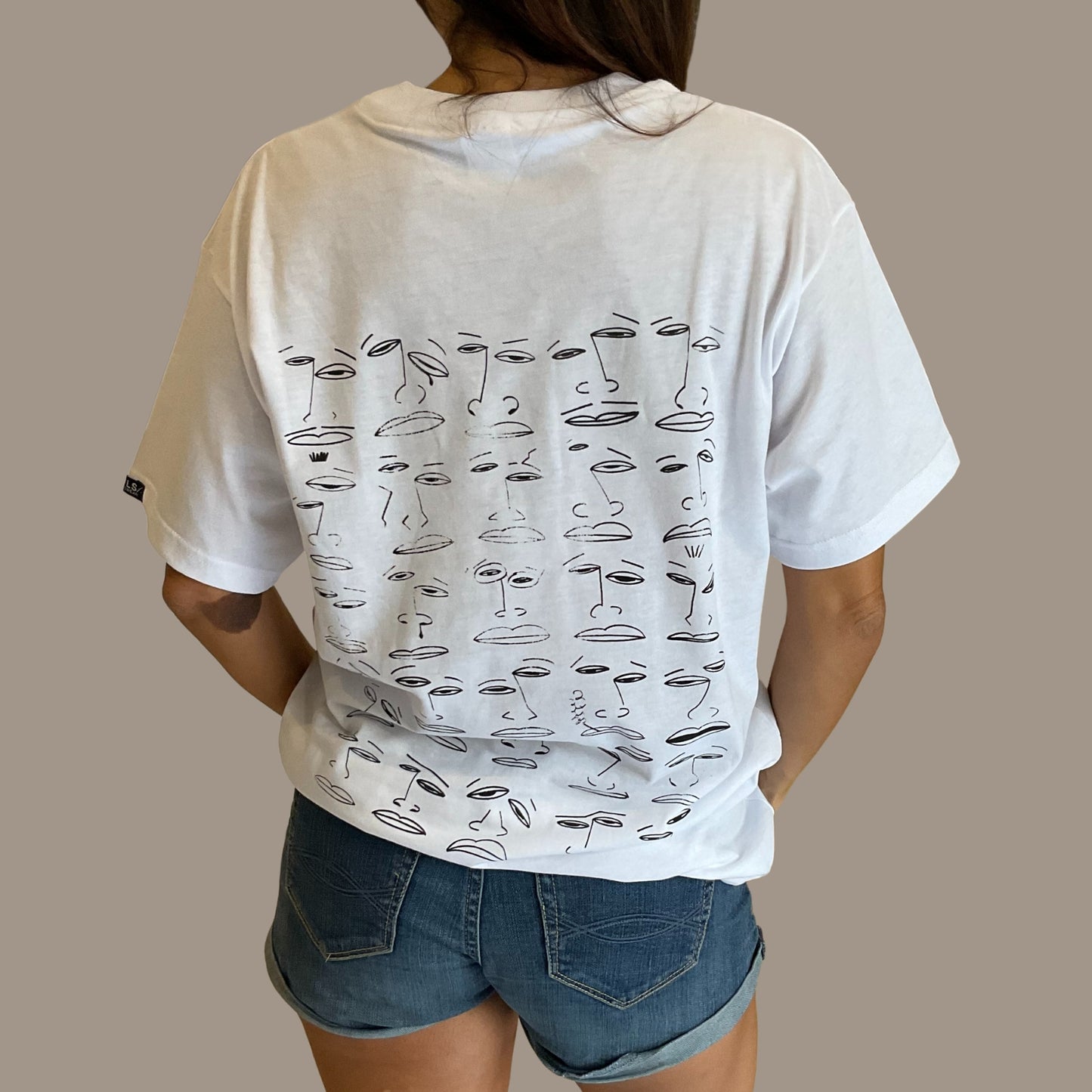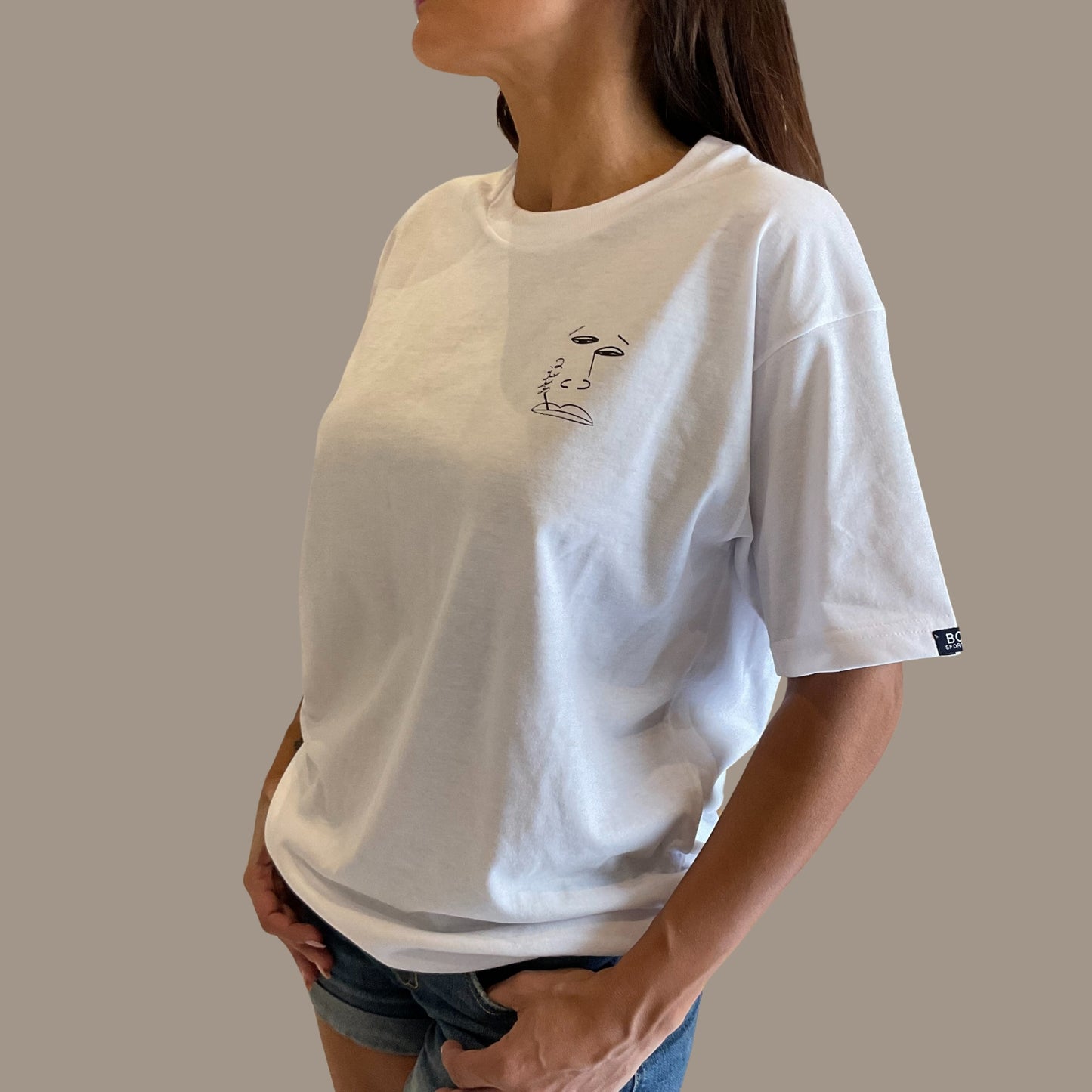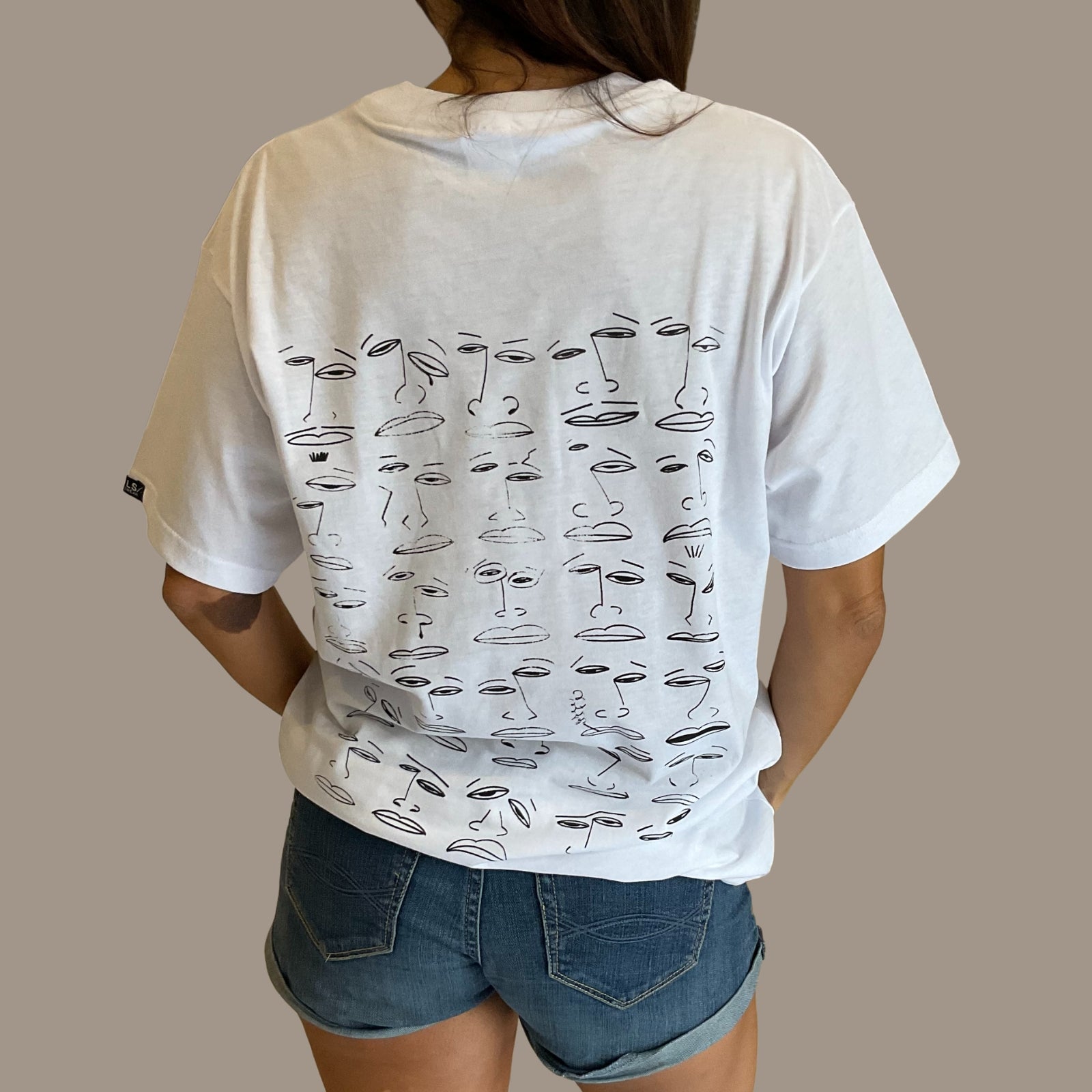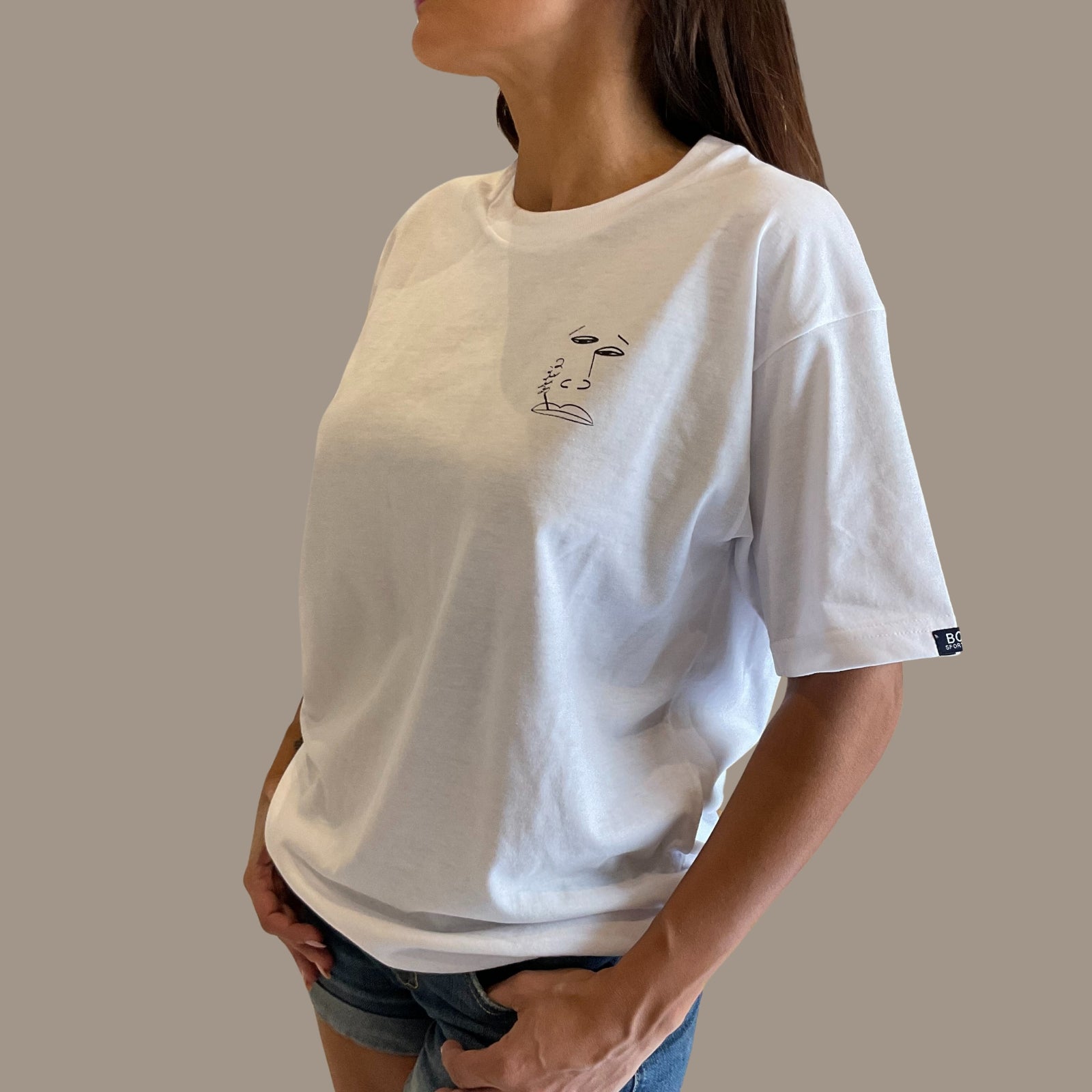Limited Edition Strangers in the Street T-shirt
Limited Edition Strangers in the Street T-shirt
By Jameel Shammout
In Clothing & Accessories
Couldn't load pickup availability
Stock level: 2 left
Item details:
▸ Features: Limited Edition▸ Materials: Cotton
▸ Art technique: Printmaking Illustration
▸ Net Weight (kg): 0.3
This white cotton t-shirt, a limited edition piece illustrated by Jameel Shammout (JamPam), is unisex and features a unique printed design on the back, with a smaller print on the front.
The Strangers in the Streets print draws attention to the faces we often pass by daily without a second glance—those of working-class individuals, refugees, and people with nowhere else to go. Each face holds untold stories, like curtains shielding a window from the outside world, offering only glimpses into the few rooms we've been trusted to see.
The 30 designs featured on this t-shirt were inspired by JamPam’s travels across numerous countries, capturing the essence of strangers encountered in the streets.


About Jameel Shammout

Jameel Shammout aka JamPam is a street artist focusing on topics that reflect his upbringing as a Palestinian in the diaspora. Born in Amman in 2001 to a family without roots in any one location, Jam moved through 8 countries and 3 continents before the age of 20. This life meant that one of the few common links between all the cultures he had to adapt to was art—the only internationally shared language.
While it’s common for artists to utilize street art, murals, and graffiti to build hope and resilience within communities, JamPam took a different approach. Surrounded by foreign societies that didn’t understand the effects of long-term occupation of a homeland or what it means for the population in and outside of the country, he used street art to offer those communities a new perspective.
“I wanted people to understand that war and occupation mean more than just numbers and statistics. I wanted people to relate to, if even just so slightly, what the Middle East has been through, and continues to go through. This pushed me to move away from the traditional forms of raising awareness and instead focus on how I can guide someone’s mind into my own. How can I find the connections between what expresses my emotions and what expresses yours? Finding that link between populations is what ultimately creates empathy and understanding between them.”


